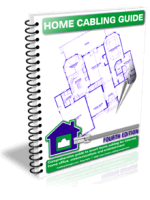|
Guide
to Separation of Network Cabling from EMI Sources
|
|||
Electrical Safety AspectsThe “Electrical Safety” aspect is described in the National Electrical Code (NEC) (ANSI/NFPA 70, currentEdition 2005, excerpts below are from 1999 edition) or other locally approved electrical safety codes. It is the law and you must conform to it. The separation between power and network cabling is described in the NEC Article 800-52 “Installation of Communications Wires, Cables, and Equipment”:
Exception:
Cables constructed of individually listed Class 2, Class 3, and
communications cables under a common jacket shall not be required to be
classified as communications cable. The fire-resistance rating of the
composite cable shall be determined by the performance of the composite
cable.
Exception No. 1: Where all of the conductors of electric light, power, Class 1, nonpower-limited fire alarm, and medium power network-powered broadband communications circuits are separated from all of the conductors of communications circuits by a barrier.
Exception No. 2:
Power conductors in outlet boxes, junction boxes, or similar fittings
or compartments where such conductors are introduced solely for power
supply to communications equipment. The power circuit conductors shall
be routed within the enclosure to maintain a minimum of 0.25-in. (6.35
mm) separation from the communications circuit conductors.
Exception No. 1:
Where either (1) all of the conductors of the electric light, power,
Class 1, nonpowerlimited fire alarm, and medium power network-powered
broadband communications circuits are in a raceway or in
metal-sheathed, metal-clad, non-metallic-sheathed, Type AC, or Type UF
cables, or (2) all of the conductors of communications circuits are
encased in a raceway.
Exception No. 2: Where the communications wires and cables are permanently separated from the conductors of electric light, power, Class 1, nonpower-limited fire alarm, and medium power network-powered broadband communications circuits by a continuous and firmly fixed nonconductor, such as porcelain tubes or flexible tubing, in addition to the insulation on the wire.
Copyright© 2000-2006 cabling-design.com
|

